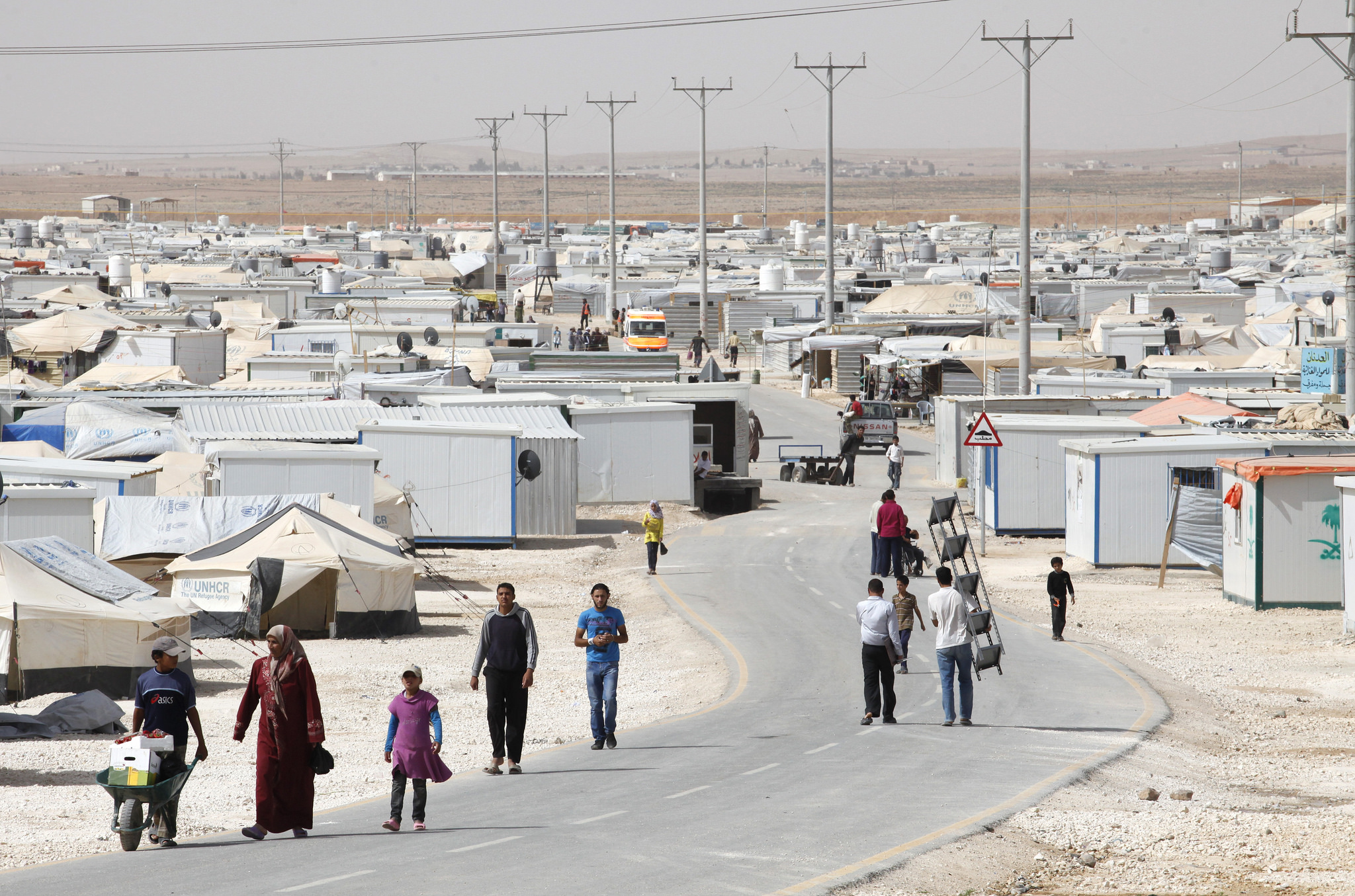As the war in Syria continues, many fear that we are experiencing a “lost generation” of Syrian youth who will be uneducated and unable to rebuild the country, even after the war ceases. If a large-scale intervention occurs, in which Assad is deposed and the Syrian civil war ends, Syria will be left with a large percentage of the population never having finished high school, attended college, or developed any employable skills. In response, USAID and UNHCR have launched the “No Lost Generation” initiative, which puts education and child protection at the center of the response to the Syrian crisis through partnerships with UN agencies and NGOs.[1] The short-term cost of providing education and humanitarian aid to Syrian refugees is massive. However, as the long-term cost of not educating these refugees is even greater, it is clear that an efficient, inclusive, and empowering solution is necessary. Tech-powered education provides these students with access to education, no matter where they are located, or how much federal funding is available for education. And tech education — teaching students how to code and build systems that can help alleviate the outcomes of humanitarian crises — is giving Syrian students useful skills that will empower them, even when there are no jobs available. When the day comes in which it is time to rebuild Syria, tech education will help to prevent Syrian youth from putting their careers on hold, while also helping to alleviate some of the effects of the crisis.
According to the 1951 Geneva Convention Relating to the Status of Refugees, refugees are entitled to primary education. Additionally, it is stated that states have to give refugees the same treatment as aliens regarding all education past the primary level.[2] According to the Ministry of Planning and Cooperation (MoPIC), though, only 3,000 Syrian youth living in Jordan’s refugee camps, which house almost 100,000 people, are enrolled in post-basic education. Among Syrian boys aged 12-17, over 50% are estimated to be out of school, the largest among all other age groups and both genders.[3] There has been some recent success in places like Lebanon, where innovations like the double shift school days (where teachers teach two different groups of students during two morning and afternoon shifts) have enabled them to enroll 200,000 students. But Lebanon’s Education for All Refugees initiative isn’t moving fast enough, especially since most of these students have been out of school for five years already, making their reintegration more difficult. The situation worsens when we consider that refugees are out of their country for ten years on average.[4] As said by a Syrian student at the Za’atari refugee camp in Jordan, “Education is the first block in building a strong society, and without it there will be no doctors, teachers, or engineers to help rebuild Syria.”[5] Schooling for refugees largely falls through the cracks because it is caught between humanitarian aid and long-term developmental aid. And due to the inefficiencies of disbursing humanitarian aid, half of all children denied schooling globally are in conflict zones.
The goal of educating thousands of Syrian children seems impossible, both due to infrastructure capability and funding, and it doesn’t seem to be getting any easier. According to the UN High Commissioner for Refugees, increases in humanitarian aid aren’t keeping up with the effects of widespread global displacement, and as a result, the financing system is nearly bankrupt.[6] Even the Higher Representative for Education in Lebanon has acknowledged the length of time required to fundraise and ultimately put those funds to use in paying teachers, buying educational materials, and ultimately educating the number of students in need.
Fortunately, new alternatives are being explored that leverage technology and entrepreneurship education. Partnering with USAID, the Norwegian Agency for Development Corporation just completed an innovation competition titled “EduApp4Syria” focused on finding the best new solution for educating Syrian children. ITWORX Education, an Egyptian-based leader in tech education, has successfully piloted tech-powered e-learning platforms such as WinjiGo in refugee camps in Lebanon. Hatem Sallam, CEO of ITWORX, states, “This e-learning solution falls under a much wider ‘school without borders’ future of sorts we’ve envisioned for underserved communities across the globe.”[7] Skeptics fear that the approach will be something along the lines of iPads coming from the sky in parachutes. Without a tech intervention, it is likely that millions of displaced Syrian students won’t get an education. And American tech executives like Mark Zuckerberg have stated that “Facebook will work with UNHCR to provide technological alternatives to educate Syrian refugees, making programs more remote and thus accessible.”[8] Faster, cheaper, more accessible means of providing education to these children are necessary, especially in countries that may not be as invested in their temporary refugees. Perhaps systems like WinjiGo can be utilized to improve access.
Schooling is beneficial for reasons beyond the educational content, namely a sense of community and time spent with peers, and remote education systems might lack this same positive impact. Other programs, however, are coming in to fill this gap while offering students a new source of hope, aspiration, and opportunities for self-sufficiency. ReBootKamp (RBK), a Silicon Valley-based nonprofit specializing in education, has developed a new approach to education to address the Syrian case. The NGO promotes the education and employment of Syrian refugees by sponsoring youth to enroll and complete programming courses. RBK’s entrepreneurship education and programs like ZatLAB, a compact, self-powered, modular, portable, and scalable learning environment in Jordan are working to teach students technical programming skills, transforming a lost generation into employable, highly-skilled computer science students.[9]
Tech education enables Syrian youth to develop valuable skills that will allow them to find jobs. In addition, it allows tech-savvy Syrians to find ways to use this technology to alleviate some of the problems faced by their people as a result of the war. They’ve built solutions like digitally fabricated healthcare equipment, rescue devices, and custom-made prosthetics.[10] Even when traditional education isn’t available, entrepreneurship and technology programs are offering a means for students to work toward something that gives them hope for the future, while teaching them skills that can help improve their situations. The story of Asem, a 21-year-old Syrian refugee, showcases the innovation from these technologies. A former college student who dropped out to become a paramedic as a result of the war, Asem taught himself how to use a 3D printer in a matter of three weeks and how to code an Arduino in three short days.[11] He used these skills to print a prosthetic hand and build an ultrasonic echolocation device for a friend blinded by sniper fire.
Asem isn’t the only Syrian refugee leveraging technology to find solutions. In fact, he has gotten involved with Refugee Open Ware (ROW), a consortium for humanitarian innovation. ROW’s mission is to employ technology to improve human rights fulfillment for both refugees and host communities in conflict zones. Such technologies include 3D printing, robotics, the internet of things (IoT), brain-computer interface, and virtual/augmented reality. Some of these new technological expansions are coming out of refugee camps, as well as NGOs that work to aid those who are displaced. Humanitarian aid is being transformed by new technological solutions that are working to improve aid distribution and food deliveries. With between 60 and 80% of humanitarian aid expenses coming directly from the distribution of aid, strapped aid budgets make increased cost efficiency and innovation a priority.
Empowering refugees through tech education will help Syria avoid facing a “lost generation” of youth who have been out of education for years. New platforms to democratize education access have the potential to prevent a lost generation of Syrian children. And Syrian youth of all education levels, through tech education, are now developing skills that will carry them into the future, regardless of their ability to attend university or complete high school. These young minds, with their newfound skills, are being empowered to develop new solutions that address the outcomes of humanitarian crises. And perhaps it makes sense to encourage these innovations to come from those who are most immediately affected by the horrific conflict that surrounds them.
[1] “About #Nolostgeneration”. 2016. No Lost Generation. http://nolostgeneration.org/about.
[2] “Convention And Protocol Relating To The Status Of Refugees”. 1967. UNHCR. http://www.unhcr.org/3b66c2aa10.html.
[3] Jalbout, Maysa and Samar Farah. 2016. Exploring The Potential Of Technology To Deliver Education & Skills To Syrian Refugee Youth. Ebook. 1st ed. Global Business Coalition for Education. http://gbc-education.org/wp-content/uploads/2016/02/Tech_Report_ONLINE.pdf.
[4] Brown, Gordon. 2016. “Without Education, Syria’S Children Will Be A Lost Generation | Gordon Brown”. The Guardian. http://www.theguardian.com/commentisfree/2016/jan/12/syria-refugee-children-lebanon-double-shift-schools.
[5] Beste, Alice. 2015. “Education In Emergencies: Will Syrian Refugee Children Become A ‘Lost Generation’? – Our World”. Ourworld.Unu.Edu. http://ourworld.unu.edu/en/education-in-emergencies-will-syrian-refugee-children-become-a-lost-generation.
[6] “With Displacement At A Record High, UNHCR Urges Rethink Of Global Humanitarian Financing”. 2014. UNHCR. http://www.unhcr.org/542abbc16.html.
[7] “ITWORX Education Launches Tech-Powered, Innovative E-Learning Program For Young Syrian Refugees In Lebanon”. 2015. Itworx.Education. http://www.itworx.education/itworx-education-launches-tech-powered-innovative-e-learning-program-for-young-syrian-refugees-in-lebanon/.
[8] Prakash, Nidhi. 2015. “Mark Zuckerberg Wants To Give Syrian Refugees Internet Access”. Fusion. http://fusion.net/story/204980/mark-zuckerberg-facebook-syrian-refugees-internet-united-nations/.
[9] Wendel, Samuel. 2016. “Rebootkamp Initiative Gives Syrian Refugees Access To Tech-Education”. Wamda Memakers GE. http://www.wamda.com/memakersge/2016/01/rebootkamp-syrian-refugees-access-tech-ed.
[10] Burrows, Lauren. 2015. “New Economies In Conflict Zones | Atlas Of The Future”. Atlas Of The Future. http://atlasofthefuture.org/project/refugee-open-ware/.
[11] Levin, Dave and Jamil Wyne. 2016. “The Fourth Industrial Revolution And The Refugee Crisis”. World Economic Forum. https://www.weforum.org/agenda/2016/01/the-fourth-industrial-revolution-and-the-refugee-crisis/.



